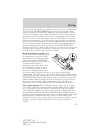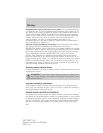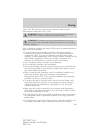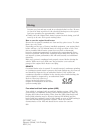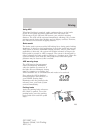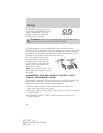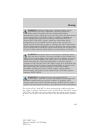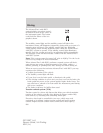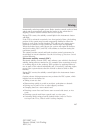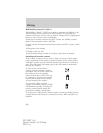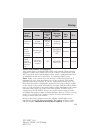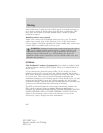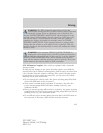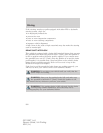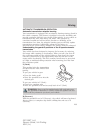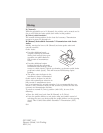
momentarily reducing engine power. Brake traction control works to limit
wheel spin by momentarily applying the brakes to the wheel that is
slipping. Traction control is most active at low speeds.
During TCS events, the stability control light in the instrument cluster
will flash.
If the TCS is activated excessively in a short period of time, the braking
portion of the system may become temporarily disabled to allow the
brakes to cool down. In this situation, TCS will use only engine power
reduction or transfer to help control the wheels from over-spinning.
When the brakes have cooled down, the system will regain all features.
Anti-lock braking, RSC, and ESC will continue to function during the
cool-down period.
The engine traction control and brake traction control system may be
deactivated in certain situations. See the Switching off traction control
section following.
Electronic stability control (ESC)
Electronic stability control (ESC) may enhance your vehicle’s directional
stability during adverse maneuvers, for example when cornering severely
or avoiding objects in the roadway. ESC operates by applying brakes to
one or more of the wheels individually and, if necessary, reducing engine
power if the system detects that the vehicle is about to skid or slide
laterally.
During ESC events, the stability control light in the instrument cluster
will flash.
Certain adverse driving maneuvers may activate the ESC system, which
include but are not limited to:
• Taking a turn too fast
• Maneuvering quickly to avoid an accident, pedestrian or obstacle
• Driving over a patch of ice or other slippery surfaces
• Changing lanes on a snow-rutted road
• Entering a snow-free road from a snow-covered side street, or vice
versa
• Entering a paved road from a gravel road, or vice versa
• Cornering while towing a heavily loaded trailer (refer to Trailer
towing in the Tires, Wheels and Loading chapter).
Driving
287
2011 MKT (mkt)
Owners Guide, 1st Printing
USA (fus)



